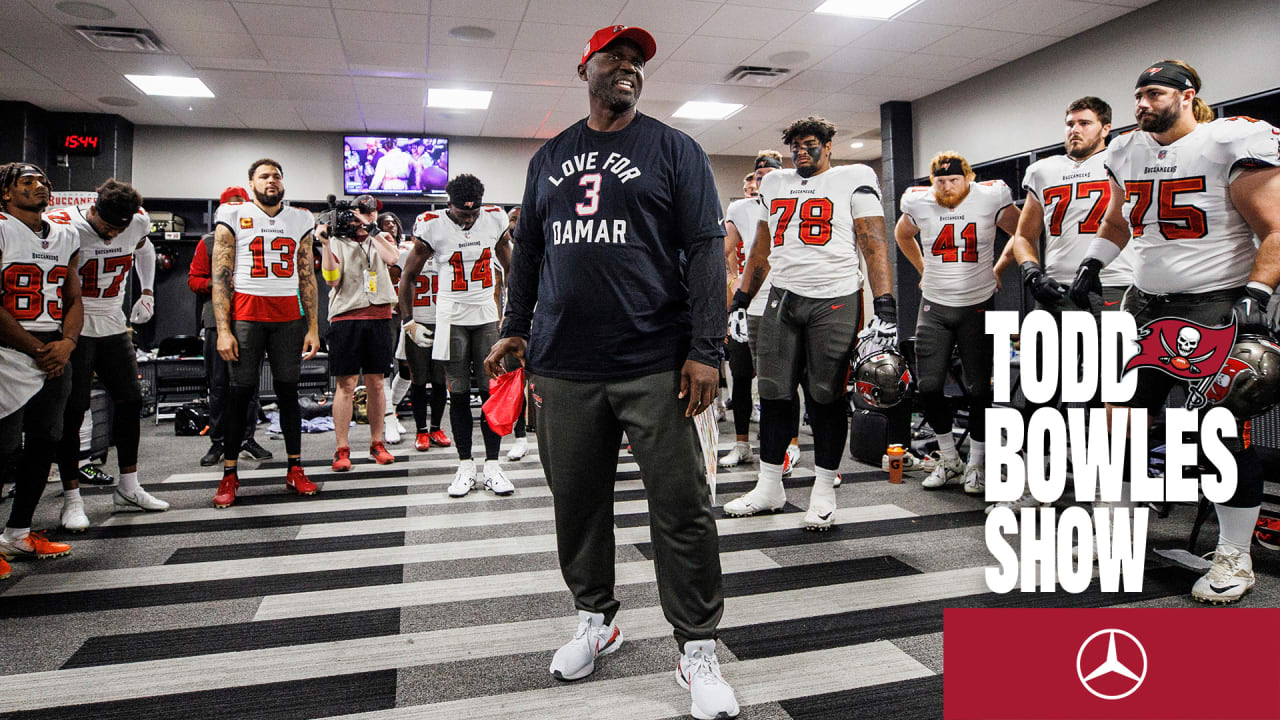
Run to Conquer: Todd Bowles’ Rushing Blueprint Dominates the Playoffs
Introduction
Todd Bowles, the head coach of the Tampa Bay Buccaneers, has emerged as a vocal proponent of a run-heavy offensive philosophy. This strategy, dubbed “Run to Win,” has catapulted the Buccaneers to the forefront of the NFL, culminating in a Super Bowl victory in the 2022 season. This in-depth analysis dissects the complexities of Bowles’ rushing strategy, examining its strengths, potential drawbacks, and implications for the modern NFL.
Unveiling the Run to Win Blueprint
Bowles’ Run to Win philosophy revolves around establishing a dominant ground game, utilizing a barrage of running plays to wear down opposing defenses. This approach aims to control the time of possession, limit the opposing team’s offensive opportunities, and create scoring chances through sustained drives.
At the heart of this strategy lies a physical, bruising running back tandem, spearheaded by Leonard Fournette and Rachaad White. These backs possess a combination of size, speed, and power, enabling them to churn out tough yards and break tackles. The Buccaneers’ offensive line, anchored by Pro Bowl center Ryan Jensen, provides a sturdy foundation for the running game, creating gaping holes for the backs to exploit.
Statistical Dominance: Numbers Don’t Lie
The statistical evidence supporting the efficacy of Bowles’ Run to Win strategy is undeniable. In the 2022 season, the Buccaneers ranked first in the NFL in rushing yards per game (167.2) and rushing touchdowns (26). This dominance extended to the playoffs, where they averaged 195.3 rushing yards per game.
Moreover, the Buccaneers’ success correlates strongly with their ability to establish a consistent running attack. In games where they rushed for at least 150 yards, they boasted a record of 8-2, including crucial victories in the playoffs. Conversely, in games where they failed to reach that mark, their record dropped to 3-7.
Sustained Success and Strategic Advantages
The benefits of Bowles’ Run to Win strategy extend beyond mere statistics. By controlling the pace of the game through a potent running attack, the Buccaneers can limit the opportunities for opposing offenses to score. This approach also takes a toll on opposing defenses, as they are forced to defend against a relentless barrage of physical running plays.
Furthermore, the Buccaneers’ rushing game has proven to be a potent weapon in the red zone. Their ability to pound the ball into the end zone with short-yardage runs has been a significant factor in their offensive success. In the 2022 season, the Buccaneers converted 53.8% of their red zone drives into touchdowns, the highest rate in the NFL.
Critical Perspectives and Potential Pitfalls
While the Run to Win strategy has been highly effective for the Buccaneers, it is not without its critics. Some analysts argue that over-reliance on the running game can make teams one-dimensional and predictable. Opposing defenses may adjust their schemes to neutralize the running attack, forcing the offense to become more pass-heavy.
Additionally, a heavy emphasis on running the ball can lead to injuries among running backs. The physical nature of the position exposes players to significant contact, increasing the risk of sprains, strains, and more severe injuries.
Conclusion: A Blueprint for Success in the Modern NFL
Todd Bowles’ Run to Win strategy has proven to be a highly effective blueprint for success in the modern NFL. This balanced approach, centered around a dominant running game, provides a solid foundation for offensive success while also offering strategic advantages.
While the strategy has its potential pitfalls, the Buccaneers’ success serves as a testament to its effectiveness. The ability to control the time of possession, limit opposing offenses, and create scoring chances through sustained drives has been a key factor in the Buccaneers’ recent dominance.
